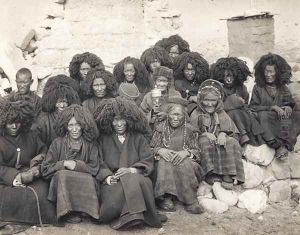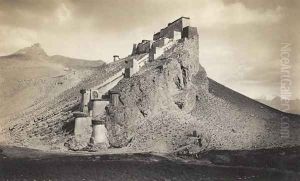John Claude White Paintings
John Claude White was an English civil servant and photographer who was born in 1853, though the exact date and place of his birth are not widely documented. He is mainly known for his work in the Indian Civil Service during the period of the British Raj and for his significant contributions to the documentation of the Himalayan region, particularly Sikkim and Bhutan, through photography.
White was educated in England and joined the Indian Civil Service in 1876. His career in India began in Bengal and eventually led him to Sikkim, where he served as the Political Officer from 1889 to 1908. During his tenure, White played a key role in British expeditions and the political administration of the region, negotiating treaties and fostering relationships with local rulers, which was crucial for British interests in the area.
An enthusiastic photographer, White's photographs are among the earliest records of the landscapes, people, and architecture of Sikkim and Bhutan. His photographic work was not only a personal endeavor but also part of his official duties. He used his camera to record his travels and the people he met, providing a valuable visual account of the region during a time of significant political and social change.
White's photography is characterized by a sense of curiosity and respect for the cultures he encountered. His images were collected in several albums, the most notable being 'Sikkim and Bhutan: Twenty-One Years on the North-East Frontier, 1887–1908', which provides a rich visual and ethnographic record of the period. This work remains an important historical source for researchers and art historians studying the history of the Himalayan region.
John Claude White's contributions extend beyond his official duties and his photography. He helped to establish trade routes and contributed to the mapping and exploration of the region. His interactions with the local leaders and people helped to shape British policy and influence in Sikkim and the surrounding areas at the turn of the 20th century.
White retired from his position as the Political Officer in 1908 and returned to England, where he would live until his death in 1918. His legacy lives on through the rich collection of photographs he left behind, offering insights into a bygone era and the early interactions between the British Empire and the Himalayan states. His work remains a bridge between the fields of history, anthropology, and art, providing a window into the cultural and political landscape of the late 19th and early 20th centuries in one of the most remote and less documented parts of the world.

